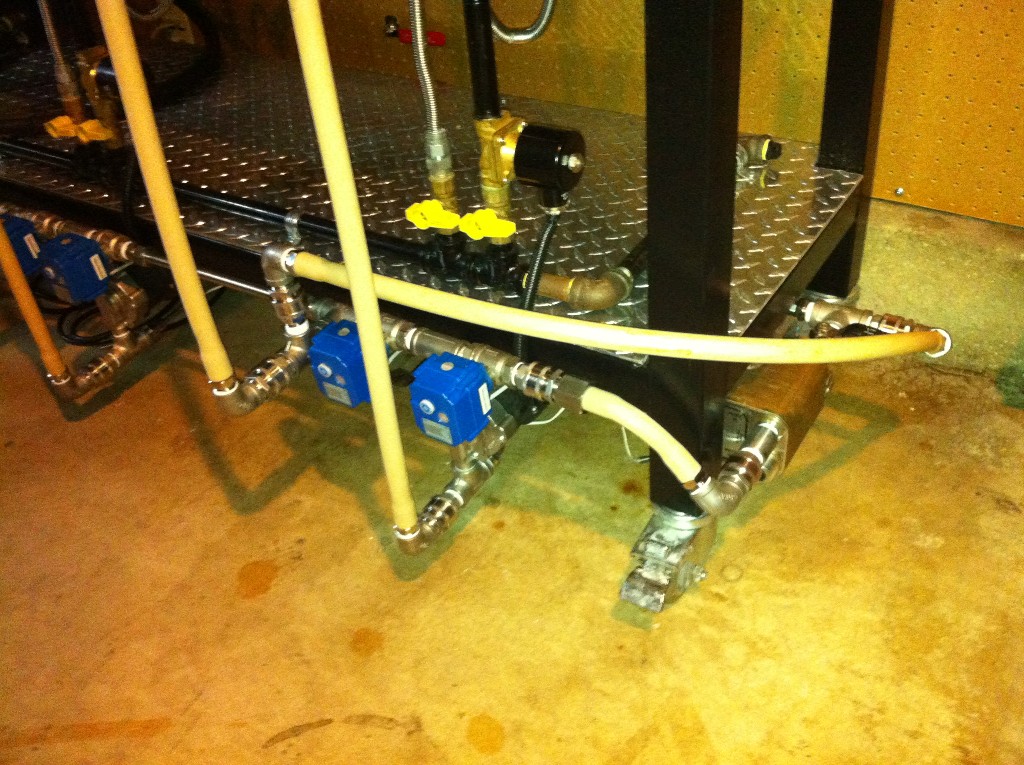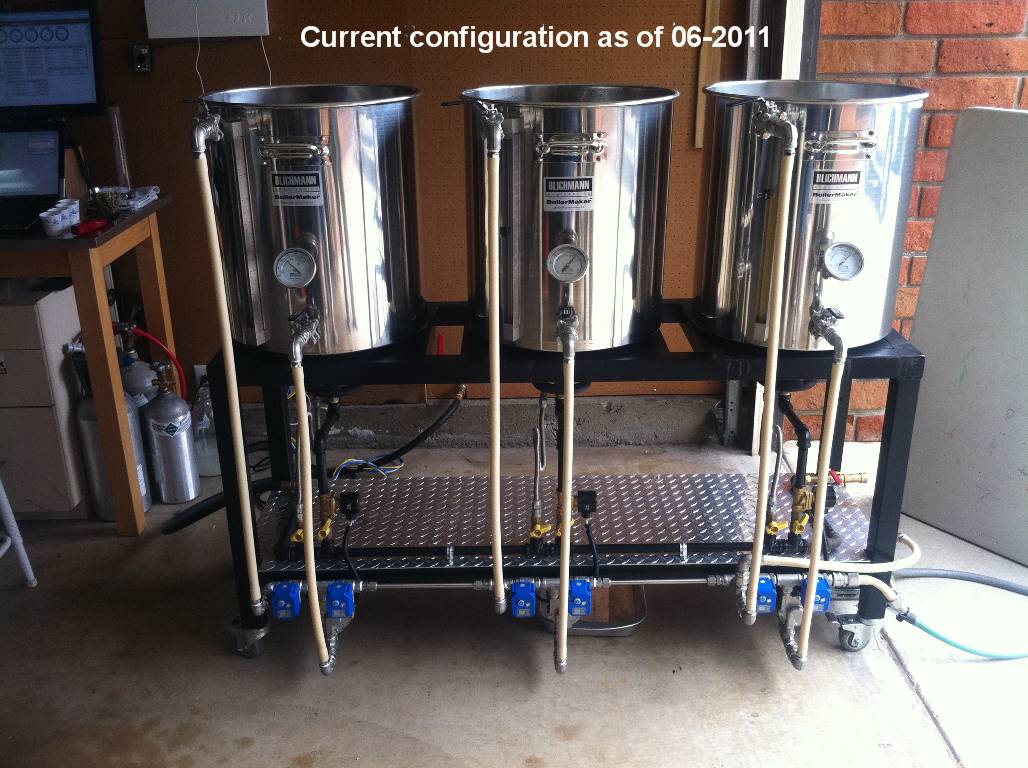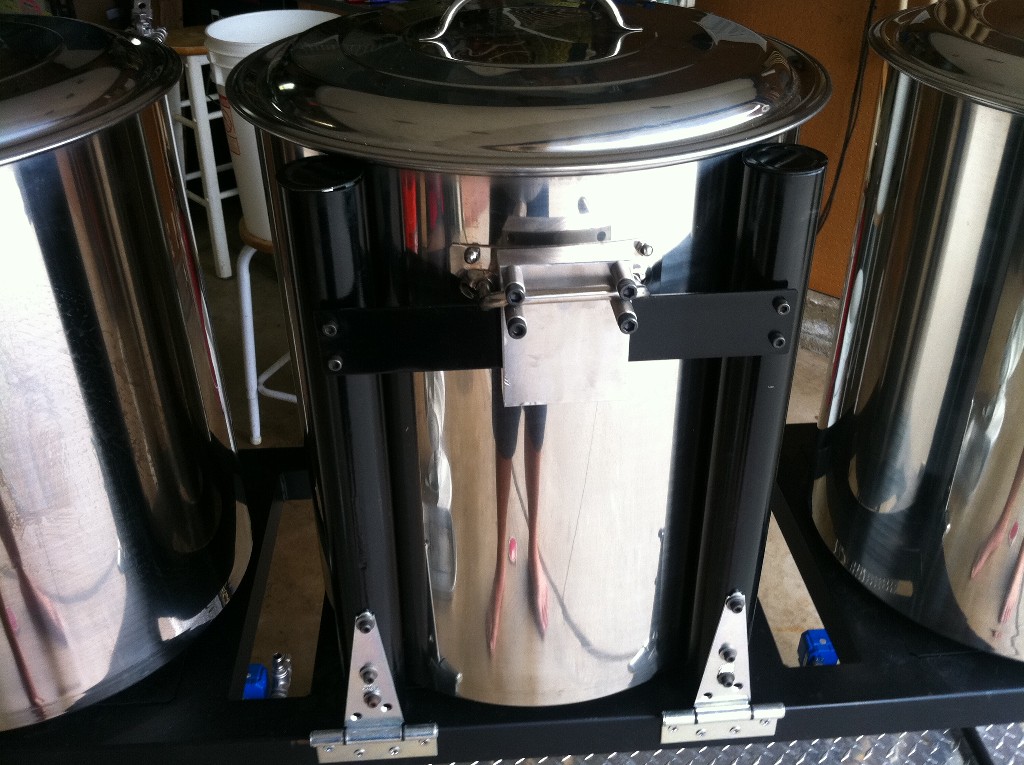Here's my new single tier Brutus style build. I've used the BCS-462 controller for the pumps/valves/temp probes. The BCS is mounted to the garage wall and is also used to control the temp for my serving fridges (2 kegerators) and my fermentor fridge (3rd kegerator). There are 3 CAT-5 data jacks on the back of the rig that are plugged into the BCS on the wall. One CAT-5 for the temp probes, one for the gas valves and pumps, and one for the liquid SS ball valves. Check out the next post for a liquid flow diagram.
Burners are natural gas. I ran a dedicated 3/4" gas line in my garage and have a 1/2" ID gas line with QD that the stand attaches to.
The finish on the stand is a high temp powder coating. I was running it for a while with no finish, but it starts to rust pretty quick. I've only fired it up once now that the coating is on it, but it seems like it should last pretty good. The powder coat is rated for 1200 degrees.
Yeah, I know, 3 pumps seems like overkill, but with pumps now available for $100, it really just simplified the setup when using the electronic ball valves. It also lets me setup for doing back-to-back brew sessions where I can be mashing brew #2 while I'm still finishing up brew #1 in the BK. I like to do continuous recirculation on both the HLT & MLT, so this handles that nicely as well.
Updates done since original posting:
- changed to SS QD's (Morebeer ones w/ Brewers Hardware full flow barbs).
- Swapped out pump heads for Chugger SS versions.
- Moved gas control valves from rear to front for easier access.
- Added tippy dump. This helps greatly on double brew days for fast swap to batch #2.
Current Configuration
Tippy Dump view (See separate thread on Tippy dump here:
https://www.homebrewtalk.com/f51/tippy-dump-blichmann-mash-tun-266852/ )
Front view - no kettles
View attachment 17786
Front view - with kettles
View attachment 17787
Therminator/Chiller view
View attachment 17788
Pump/Valve view
View attachment 17789
Burner View
View attachment 17790






















![Craft A Brew - Safale BE-256 Yeast - Fermentis - Belgian Ale Dry Yeast - For Belgian & Strong Ales - Ingredients for Home Brewing - Beer Making Supplies - [3 Pack]](https://m.media-amazon.com/images/I/51bcKEwQmWL._SL500_.jpg)







































